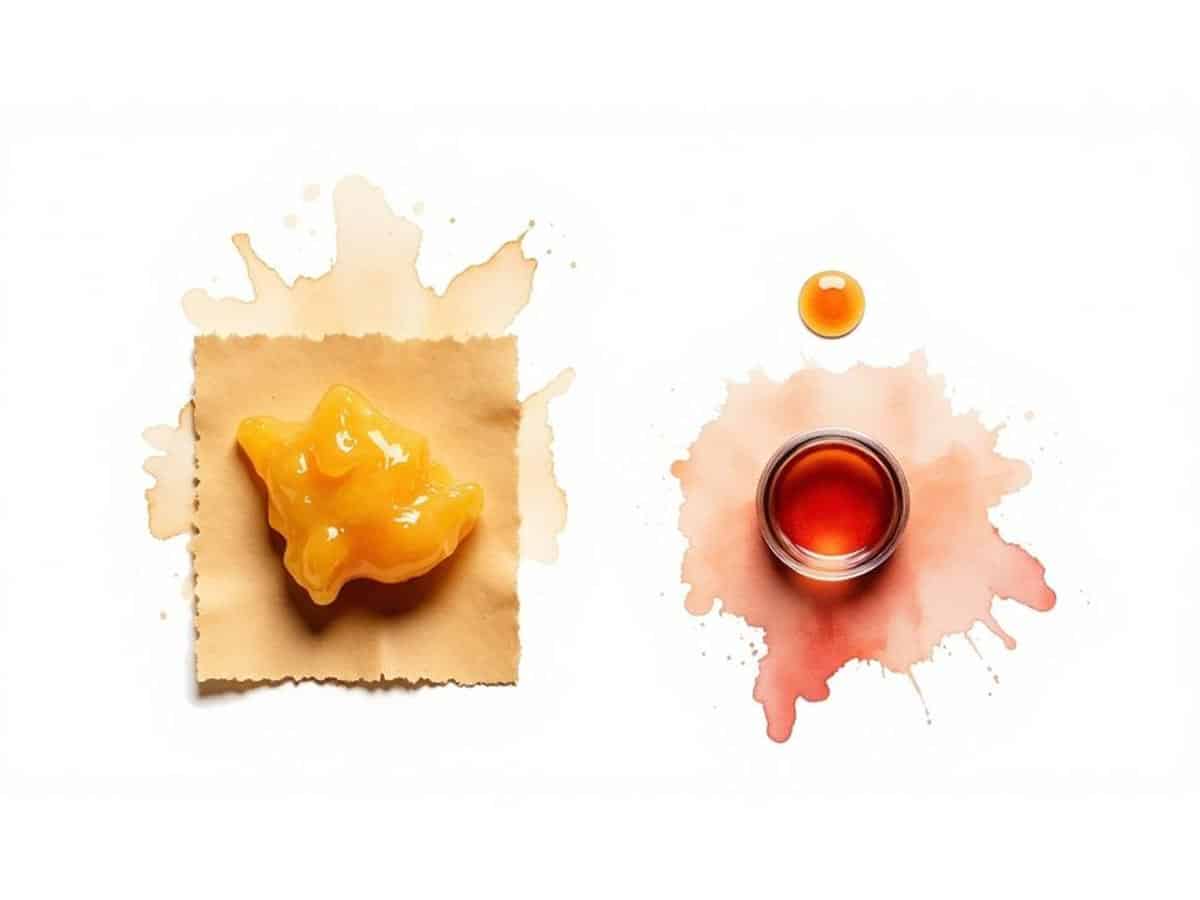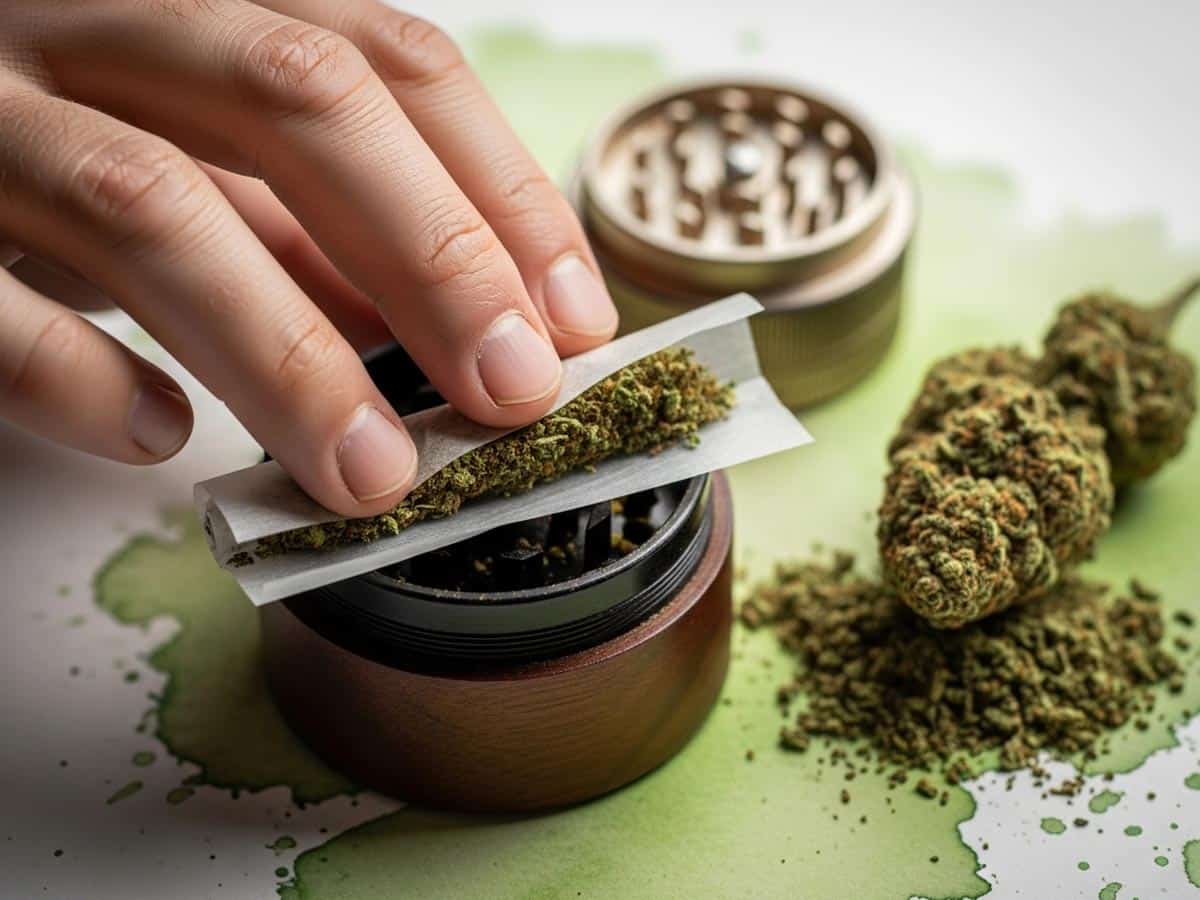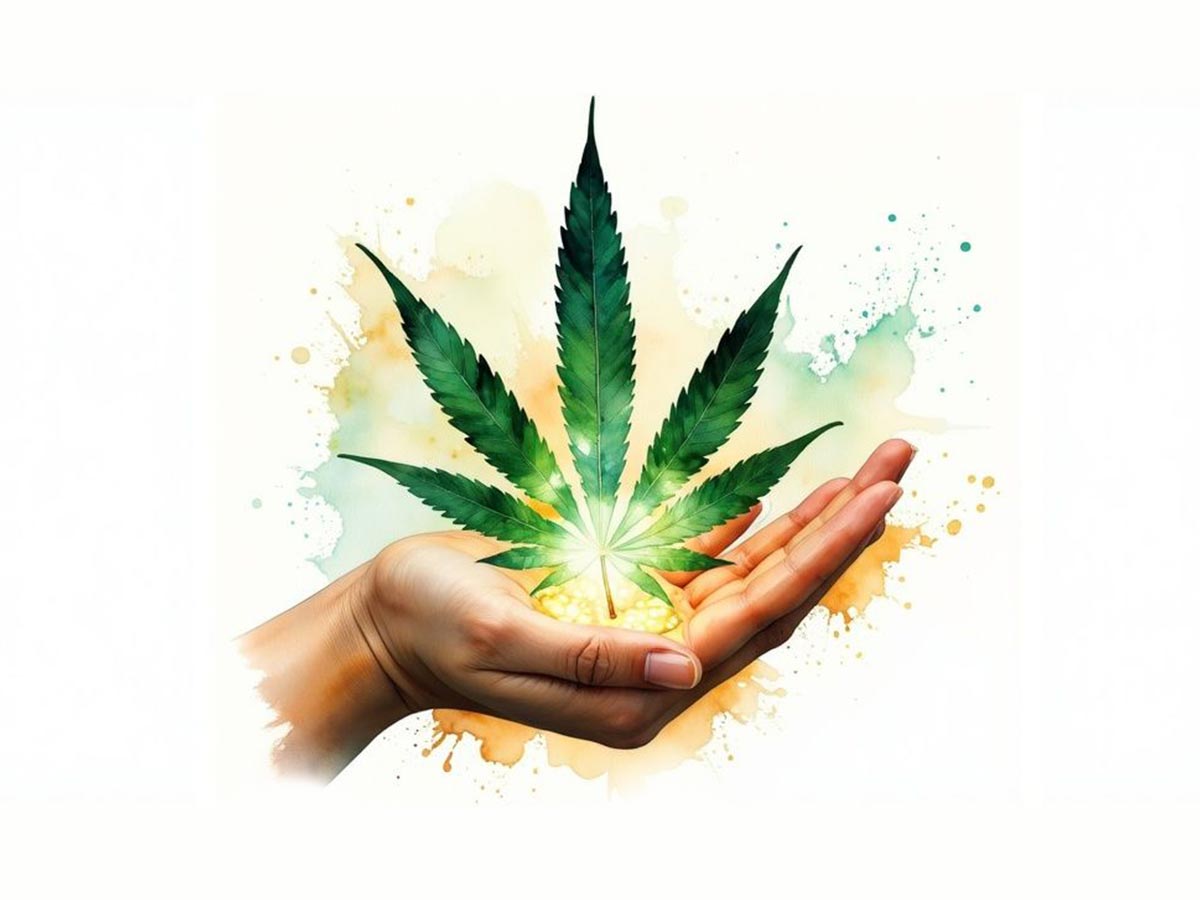Let’s cut right to the chase. The biggest difference between rosin and resin comes down to one critical factor: solvents.
Think of it this way: rosin is the cold-pressed, extra-virgin olive oil of the cannabis world. It’s extracted using only heat and pressure, making it a completely solventless concentrate. Resin, on the other hand, relies on chemical solvents like butane or CO₂ to strip the valuable compounds from the plant.
Understanding the Core Differences
This single distinction—solvents vs. no solvents—is a fork in the road that defines everything about the final product. It shapes the concentrate’s purity, its flavor profile, and even how much you’ll pay for it. Rosin’s clean, chemical-free process makes it a top choice for purists, while resin’s highly efficient extraction method is famous for producing exceptionally potent and aromatic results.
While both are powerful, they reach their peak in different ways. Because resin extraction is so effective at isolating cannabinoids, it often delivers slightly higher THC levels. It’s not uncommon to see live resin products pushing 95% THC. You can explore more about these potency variations and what they mean for your experience.
The infographic below gives you a clear visual breakdown of how extraction, purity, and processing time stack up.
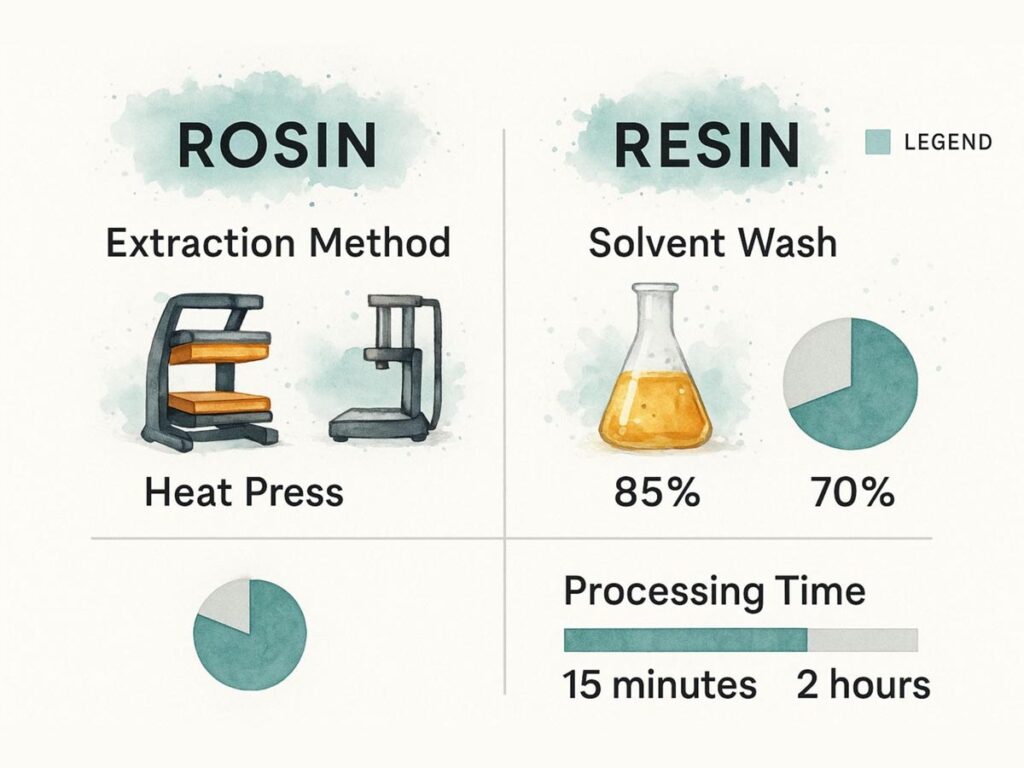
As you can see, rosin’s quick, solvent-free method is a world apart from the more involved, solvent-based process for resin, which has a direct impact on the final purity and flavor.
Rosin vs Resin Core Attributes Compared
To truly understand what you’re buying, this side-by-side comparison makes the choice crystal clear. This table gives you an at-a-glance look at their core attributes before we dive into what these differences actually mean for your experience.
| Attribute | Rosin | Resin (Live Resin) |
|---|---|---|
| Extraction Method | Solventless (Heat & Pressure) | Solvent-Based (e.g., Butane, CO₂) |
| Purity | Considered purer; no residual solvents | Requires purging to remove solvents |
| Flavor Profile | Authentic to the original plant | Intense and vibrant terpene profile |
| Starting Material | Flower, Kief, or Hash | Fresh-frozen or cured plant material |
| Typical Cost | Generally more expensive | Often more budget-friendly |
This table neatly sums up the trade-offs. When you choose rosin, you’re investing in absolute purity and a true-to-plant flavor. With resin, you unlock an intense terpene profile and a more accessible price point, thanks to a highly efficient and scalable extraction process.
Understanding the Evolution of Concentrates
To fully appreciate the rosin vs. resin debate, you have to look at the history of cannabis concentrates. This story doesn’t start in a modern lab; it begins with ancient, hands-on techniques. For centuries, people have been crafting concentrates like charas by hand-rolling fresh cannabis plants or sifting kief to press into hash. These were the original solventless concentrates.
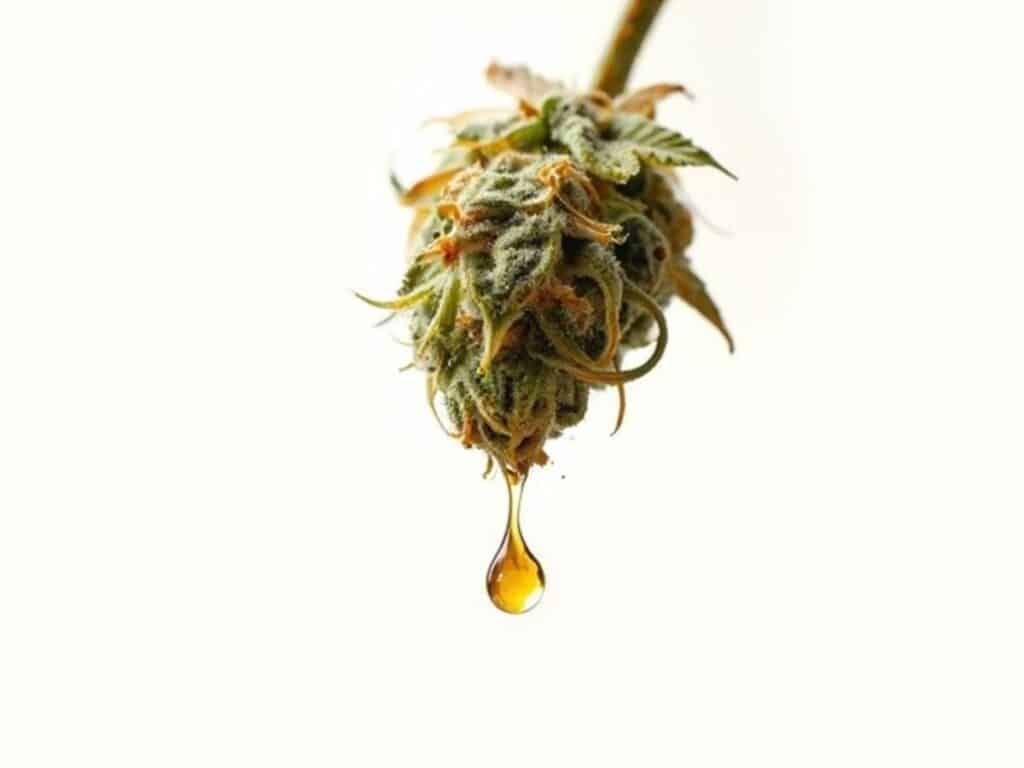
For generations, that was the standard—no chemicals, just pure plant. But in the late 20th century, the game changed with the introduction of chemical solvents. This innovation led to products like Butane Hash Oil (BHO), which allowed for incredibly efficient cannabinoid extraction and paved the way for the modern resin market.
The Modern Concentrate Renaissance
The 2010s marked a major turning point. The world of concentrates split, heading down two very different paths of innovation.
One path took solvent-based extraction to new heights with the invention of live resin. This method was a game-changer. Instead of using dried and cured flower, producers began flash-freezing fresh plants right at harvest. This breakthrough technique preserves the full spectrum of delicate terpenes that are normally lost during the curing process, resulting in an incredibly aromatic product.
The other path was about returning to purity, but with a modern upgrade. As consumers began demanding cleaner, more transparent options, rosin exploded in popularity around the mid-2010s. It offered a powerful, solventless alternative using only heat and pressure, blending old-school principles with modern precision. You can dig deeper into the historical differences between rosin and resin and see how their paths diverged.
The core of the rosin vs. resin debate is a story of innovation. It presents a clear choice: do you want the intense, vibrant terpenes captured by advanced solvent techniques (live resin), or do you prefer the pure, unadulterated expression of the plant achieved with simple mechanical force (rosin)?
This evolution is fantastic news for you. It means you have options. You can go for a product made with sophisticated chemical processes designed to maximize flavor, or you can choose a concentrate crafted with a simple, clean technique that lets the plant’s natural profile shine.
How Extraction Defines the Final Product
When you break it down, the difference between rosin and resin isn’t just about solvents. It’s about two fundamentally different philosophies. One is a pure, mechanical squeeze that honors the plant in its natural state; the other is a scientific process designed to capture the plant at its absolute peak of aromatic expression.
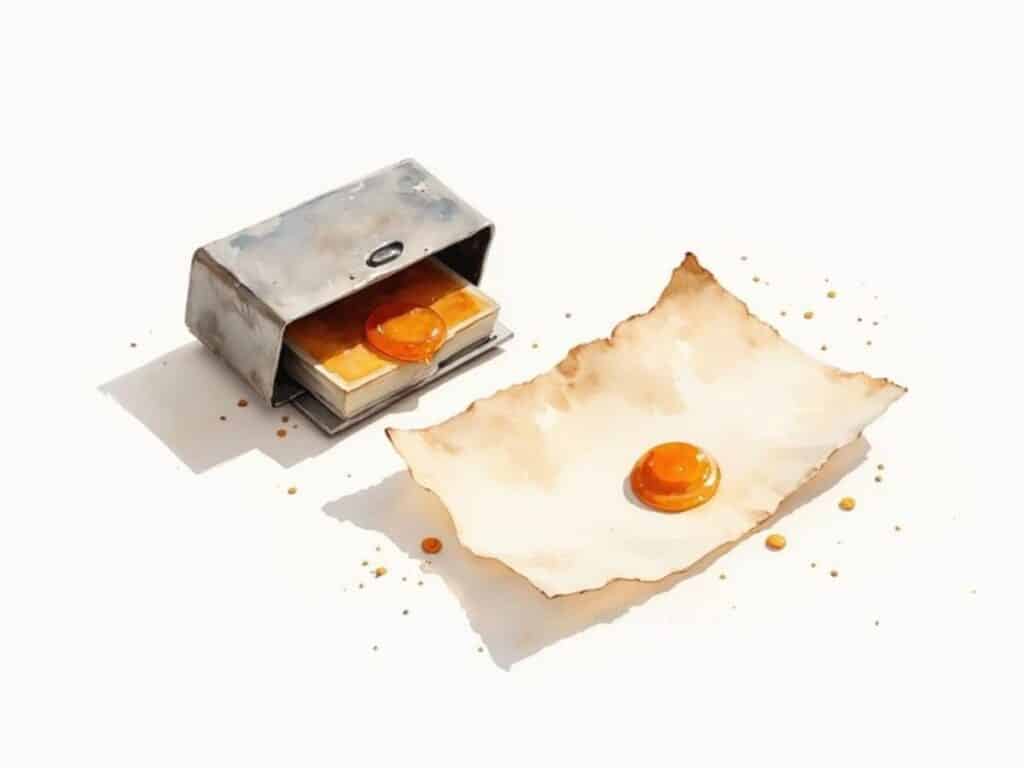
The Rosin Method: A Pure Expression of the Plant
Making rosin is an art of precision. It’s a beautifully straightforward process where cannabis flower, kief, or hash is placed in a press and subjected to carefully controlled heat and immense pressure. This combination literally squeezes the valuable oils—rich with cannabinoids and terpenes—directly from the plant material.
No chemicals. No additives. What you get is a pure, unaltered reflection of the strain it came from. This is rosin’s biggest selling point: its absolute, solventless purity.
Because the process is so direct, the quality of the starting material is everything. Actionable Insight: If you’re pressing at home, start with high-quality, fresh flower with a humidity level around 62% for the best results. Pressing top-shelf flower will yield a beautiful, flavorful rosin, while pressing high-grade bubble hash creates “live rosin”—a connoisseur-grade product celebrated for its incredible terpene profile and potency.
The Live Resin Method: Capturing a Moment in Time
If making rosin is an art, then making live resin is a science. The entire process is engineered to capture the plant’s essence as if it were still growing. It all begins by flash-freezing the cannabis plant immediately after harvest, locking in the volatile terpenes that normally evaporate during drying and curing.
From there, a chemical solvent like butane or propane is used to wash over the frozen plant matter, efficiently stripping out the preserved cannabinoids and terpenes. For a deep dive into the technical details, our guide on what is live resin breaks down the entire fascinating process. This method consistently produces higher yields and often higher THC percentages compared to rosin.
The core trade-off becomes clear: Rosin offers unmatched purity by avoiding chemicals entirely, resulting in a cleaner but often lower-yielding product. Live resin uses chemical intervention to achieve incredible efficiency and capture a powerful, aromatic snapshot of the living plant.
The Critical Purge in Resin Production
Using solvents adds one final, crucial step to the process: the purge. After the extraction, the resulting mixture contains residual solvent that must be removed. To ensure the final product is clean and safe, this mixture is placed in a vacuum oven.
This isn’t an optional step—it’s essential for your safety. The oven gently heats the extract under a vacuum, causing any remaining butane or propane to evaporate completely. A properly purged resin is clean, potent, and safe. An improperly purged one can contain harmful chemicals. This is why you should only buy resin from reputable brands that provide third-party lab tests verifying their products are free of residual solvents.
Comparing Flavor, Potency, and the User Experience
All the technical talk is interesting, but what really matters is how these concentrates perform. When you’re choosing between rosin and resin, you’re deciding between two distinct experiences in taste, aroma, and effect. The best choice simply comes down to what you’re looking for.
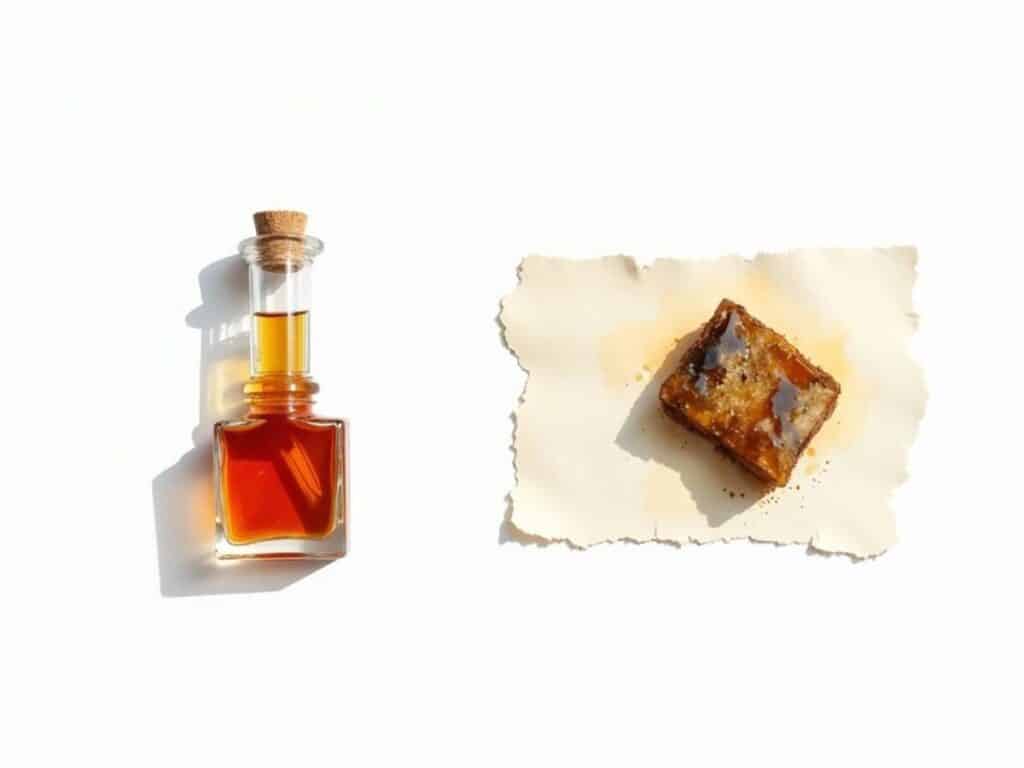
The Flavor Showdown: Rosin vs. Live Resin
Rosin is prized for delivering a flavor profile that is incredibly true to the original plant. Because it’s made with only heat and pressure, nothing gets in the way of the natural terpenes. The taste is pure, nuanced, and complex—it’s the most authentic expression of a specific strain’s flavor you can find.
Live resin, on the other hand, is a full-on sensory explosion. By flash-freezing the plant, its extraction process captures a massive spectrum of volatile terpenes—the delicate aromatic compounds that usually disappear during drying and curing. The result is a supercharged, almost hyper-realistic flavor that is intensely aromatic and bold.
The flavor debate comes down to authenticity versus intensity. Rosin gives you the pure, unadulterated flavor of the cannabis plant. Live resin offers a vibrant, high-definition aromatic experience that captures the essence of the living flower.
Potency and the Entourage Effect
When it comes to raw THC numbers, both concentrates are heavy hitters. Thanks to the efficiency of solvent-based extraction, live resin often clocks in with slightly higher THC percentages, sometimes pushing up to 95%. This delivers a powerful, fast-acting high that many experienced users seek.
But potency isn’t just about THC. Many rosin advocates argue it provides a more complete experience due to the entourage effect. This is the theory, supported by a growing body of research, that cannabinoids and terpenes work together synergistically, creating a more nuanced and holistic effect than any single compound can alone. Because rosin preserves the plant’s full, unaltered chemical profile, its effects are often described as more balanced and well-rounded. You can learn more about how these compounds interact in our guide explaining what is CBD vs THC.
This brings you to your key decision.
Choosing Your Ideal Experience
The right concentrate for you depends entirely on your priorities. To find your perfect match, see which of these user profiles sounds most like you:
- The Purist: If you demand natural processes and a product free from any chemical intervention, rosin is your clear winner. Its solventless purity provides peace of mind and an incredibly authentic flavor.
- The Flavor Chaser: If your main goal is to experience the most intense, explosive, and aromatic profile possible, live resin is engineered for you. It’s designed from the ground up to maximize that vibrant terpene experience.
- The Potency Seeker: If you’re focused on achieving the highest possible THC level for a powerful and immediate effect, live resin often has a slight edge due to its highly efficient extraction process.
Ultimately, it’s a choice between a clean, authentic experience and a bold, high-intensity journey. There is no single “better” option—only the one that aligns perfectly with the experience you want to have.
Making the Right Choice for Your Needs
So, should you choose rosin or resin? The best answer depends entirely on your personal priorities—whether you value purity, flavor, price, or a specific type of high. Once you know what matters most to you, picking the right concentrate becomes simple.
Let’s move beyond generic pros and cons and look at this from a practical standpoint. See which of these scenarios fits you best, and the right choice will become obvious.
The Purity Enthusiast
If you want a product that is as clean and natural as possible, rosin is your undisputed champion. The process is just heat and pressure. No solvents, no chemicals—nothing that didn’t come directly from the plant.
This is a critical factor for anyone cautious about what they consume, especially medical users. With rosin, there is zero risk of residual solvents, giving you complete peace of mind and the purest expression of the cannabis plant.
The Flavor Chaser
Are you driven by the hunt for the most intense, vibrant, and explosive terpene profiles? If so, then live resin is what you need to experience. The entire point of flash-freezing the plant is to lock in the delicate, volatile terpenes that are lost during standard drying and curing.
The result is a concentrate that delivers a powerful, almost shockingly realistic aroma and taste. While rosin offers a clean and authentic flavor, live resin is engineered to provide a sensory punch that is second to none.
Your choice is a trade-off between authenticity and intensity. Rosin gives you a pure, true-to-the-plant flavor, while live resin offers a supercharged aromatic experience that captures the essence of the living flower.
The Budget-Minded Consumer
Let’s be practical—price is a major factor for most people. This is where resin typically has the advantage. Solvent-based extractions are more efficient and produce higher yields, meaning resin products are generally more affordable.
For anyone seeking a potent experience without a premium price tag, cured resin is an excellent starting point. While live rosin is almost always a top-shelf product with a price to match, the world of resin offers many high-quality options that are easier on your wallet, making it a smart choice for daily users.
Matching Your Needs to the Product
To make your decision even easier, here’s a quick guide to match your top priority with the right concentrate.
Which Concentrate Should You Choose?
This table breaks down the best choice based on what you value most in a concentrate.
| If Your Priority Is… | The Best Choice Is… | Why |
|---|---|---|
| Maximum Purity | Rosin | The solventless method guarantees a 100% chemical-free product. |
| Intense Flavor | Live Resin | Its flash-freezing process captures volatile terpenes for an incredibly bold taste. |
| Best Value | Cured Resin | Solvent extraction is more efficient, making it the most budget-friendly option. |
| Balanced Effects | Rosin | Users often describe a more well-rounded, “full-spectrum” experience. |
Actionable Insight: No matter which you choose, proper storage is crucial. Keep your concentrates in an airtight glass or silicone container and store them in a cool, dark place (like a refrigerator) to preserve their terpenes and potency for months.
Frequently Asked Questions
When you’re exploring the world of cannabis concentrates, a few questions always come up, especially in the classic rosin vs. resin debate. Let’s get you clear, confident answers.
Is Rosin Safer Than Resin?
The concept of “safer” comes down to the extraction process. Rosin is a 100% solvent-free concentrate, made with nothing more than heat and pressure. This mechanical process eliminates any possibility of chemical residue. For health-conscious consumers, this provides ultimate peace of mind.
Resin, however, is made using chemical solvents like butane. While this might sound concerning, the purging process is a mandatory final step for any reputable producer. The concentrate is placed in a vacuum oven to boil off all residual solvents. Trustworthy brands provide third-party lab tests to prove their products are clean. So, while rosin’s purity is guaranteed by its method, a properly purged and tested resin is also perfectly safe to consume.
Why Is Rosin More Expensive?
The higher price of rosin comes down to simple economics: yield and labor. The solventless pressing method is less efficient than solvent-based extraction. You need significantly more starting material—like premium flower or hash—to produce the same amount of final product.
In short, you get less “juice” from the squeeze. That lower yield, combined with the labor-intensive process of creating high-quality hash for pressing, drives up the cost. You’re paying a premium for purity and craftsmanship.
Can You Tell Them Apart By Appearance?
Sometimes, but it’s not a foolproof method. Rosin often has a more opaque, waxy, or buttery appearance—think badder or batter. Its color can range from a pale, creamy blonde to a rich amber. Live resin frequently appears glossier and more translucent, with textures ranging from sugary crystals to a thick sauce.
However, these are just general guidelines. The final consistency of any concentrate is heavily influenced by the starting strain and the specific techniques used by the extractor. You can’t reliably identify one from the other by sight alone.
What Is the Best Way to Consume Them?
Both rosin and resin are best consumed by dabbing, as it vaporizes the concentrate to deliver its full spectrum of flavors and effects. Temperature control is key.
Actionable Insight: For rosin, always use a low-temperature dab (around 450-550°F). This gentle heat preserves the delicate terpenes that define rosin’s authentic, true-to-the-plant flavor. For live resin, you have a bit more flexibility, but starting low will still provide the best taste. The best approach is to experiment—start low and gradually increase the temperature to find the sweet spot for your specific concentrate.
Ready to discover the perfect concentrate for your needs? Elevation Headquarters offers a curated selection of premium rosin and resin designed to satisfy every preference and palate. Explore our collection online and experience the difference that quality makes.
Shop Our Concentrates at Elevation HQ New York Cannabis Dispensary

